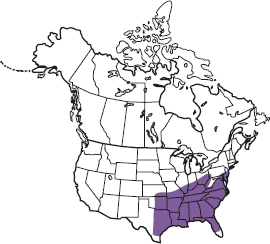Poecile carolinensis

adult
The Carolina Chickadee is very similar to its Black-capped Chickadee cousin and, in the limited zone where the two species overlap, certain identification may not always be possible. The sexes are similar and both adults and juveniles have a gray-buff back. The dark wings have pale margins to the inner flight feathers and greater coverts, but these features are less striking than in Black-capped. The head has a black cap, throat, and bib (like Black-capped), and white cheeks that grade to pale gray on the sides of the nape. The underparts are overall pale gray with a faint buff suffusion on the flanks; the result is that the flanks are subtly “warmer” in tone than in Black-capped. The dark tail has pale feather margins. The legs are blue-gray and the bill is dark.
The Carolina Chickadee is present year-round in wooded habitats in southeast U.S.A. In the wild, it nests in treeholes but, like many related songbirds, it will happily use a nestbox. It also visits garden feeders, especially in winter, and outside the breeding season will join nomadic mixed-species songbird flocks as they search for food.
FACT FILE
LENGTH 4.75 in (12 cm)
FOOD Invertebrates and seeds
HABITAT Deciduous woodland
STATUS Widespread and common resident
VOICE Song is a four-note whistling fee-bee fee-bay. Call is rapid chika-dee-dee, subtly higher in pitch than that of Black-capped Chickadee
![]()
